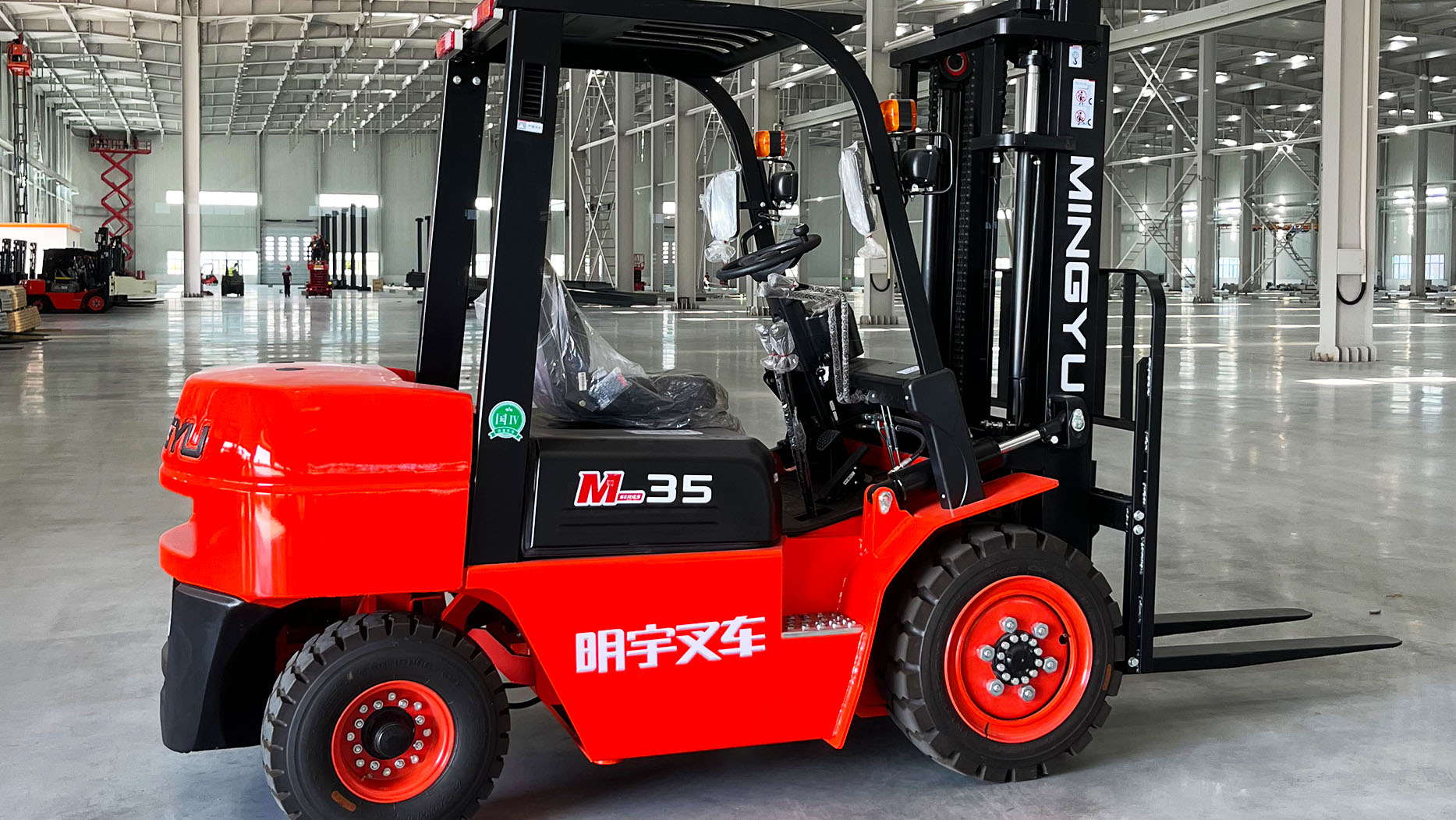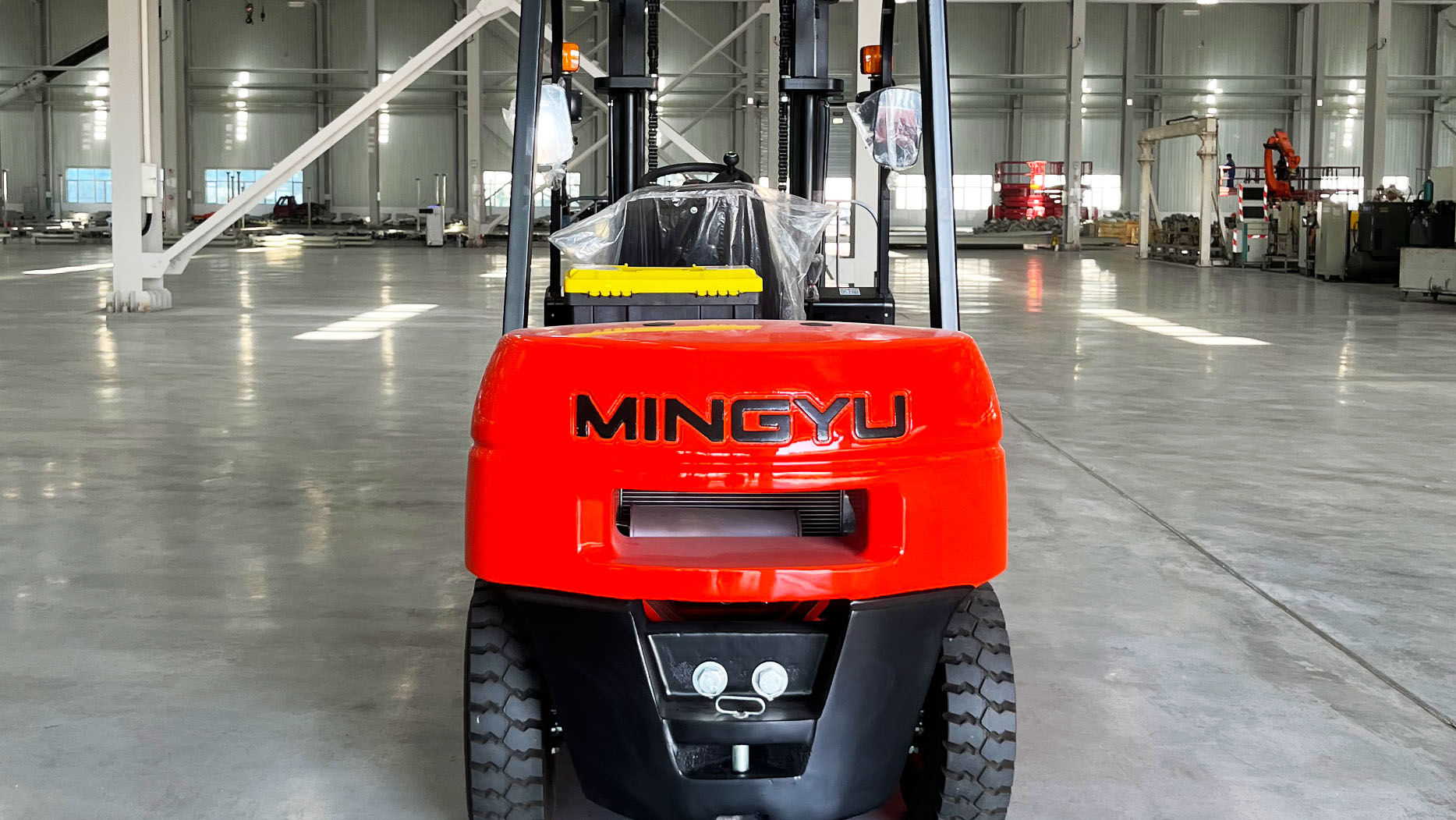I. Introduction
Diesel forklifts are the backbone of countless warehouse operations, efficiently moving heavy loads and streamlining material handling. However, the performance and longevity of these machines, as well as the safety of the warehouse environment, are significantly influenced by a seemingly simple component: the tires. Incorrect tire selection can lead to premature wear, reduced efficiency, increased fuel consumption, and even damage to the warehouse floor itself. Therefore, a nuanced understanding of tire types and their suitability for specific floor conditions is crucial. This article aims to provide a comprehensive guide to selecting the optimal diesel forklift tires, emphasizing the need for a tailored approach that considers floor type, operational demands, and long-term cost-effectiveness.
II. Understanding Diesel Forklift Tire Types
A. Pneumatic Tires:
These tires are air-filled, similar to those on cars or trucks. They offer excellent cushioning, making them ideal for rough or uneven surfaces, including outdoor applications. However, they are susceptible to punctures and require regular pressure checks.
B. Solid/Cushion Tires:
Solid tires are made of solid rubber or polyurethane and are designed for smooth, indoor surfaces. Cushion tires, a subcategory, are solid tires designed to provide some cushioning. They offer exceptional durability and puncture resistance but provide less cushioning than pneumatic tires.
C. Polyurethane Tires:
These tires are made from a hard, durable polyurethane compound. They offer high load capacity, low rolling resistance, and are ideal for smooth concrete floors. However, they are not suitable for rough surfaces or outdoor use.
D. Tire Composition and Tread Patterns:
The rubber compounds of tires vary in hardness, impacting wear and traction. Softer compounds offer better grip but wear faster, while harder compounds provide longer life but less traction. Tread patterns also play a critical role, with smooth treads ideal for indoor use and grooved treads providing better traction on wet or uneven surfaces.
III. Analyzing Warehouse Floor Types and Their Requirements (Approx. 500 words)
A. Smooth Concrete Floors:
These floors are common in many warehouses and require tires that minimize rolling resistance and provide smooth operation. Polyurethane or smooth solid tires are generally the best choices, offering high load capacity and minimal floor damage.
B. Rough Concrete/Asphalt Floors:
These floors present challenges due to uneven surfaces and potential debris. Pneumatic tires or rugged solid tires with deep treads are recommended, providing adequate cushioning and traction.
C. Epoxy-Coated Floors:
Epoxy coatings are delicate and require tires that won't damage the surface. Non-marking compounds and smooth tires are essential to prevent scratches and scuff marks.
D. Tiled or Sealed Floors:
These floors require tires that distribute weight evenly and prevent damage to the tiles or seal. Polyurethane or smooth solid tires with a wide contact patch are recommended.
E. Floors with Debris or Obstacles:
Warehouses with debris or obstacles require tires with puncture resistance and good traction. Solid or pneumatic tires with rugged treads are ideal, minimizing the risk of flats and ensuring safe operation.
IV. Operational Factors and Their Influence
A. Load Capacity and Weight Distribution:
The weight of the loads being handled significantly impacts tire selection. Higher load capacities require tires with greater strength and durability. Even weight distribution is also crucial to prevent uneven tire wear and ensure stability.
B. Operating Environment (Indoor/Outdoor):
Indoor environments generally require solid or polyurethane tires, while outdoor environments benefit from pneumatic tires that can handle varying terrain and weather conditions. Temperature variations can also affect tire performance, with extreme temperatures impacting tire flexibility and durability. Exposure to chemicals or oils necessitates tires with chemical resistance.
C. Operating Frequency and Distance:
High-usage environments require tires that can withstand frequent operation and long distances. Wear and tear considerations are essential, with heat buildup being a concern for prolonged operation.
D. Turning Radius and Maneuverability:
The forklift's turning radius and maneuverability are influenced by tire type. Smaller, more compact tires enhance maneuverability in tight spaces. Tire profile also plays a role, with rounded profiles facilitating smoother turns.
V. Maintenance and Longevity
A. Proper Tire Inflation and Maintenance:
Regular tire inspections and pressure checks are essential for pneumatic tires. Maintaining proper inflation extends tire lifespan and improves fuel efficiency. For solid tires, regular inspections for wear and damage are crucial.
B. Preventing Tire Damage:
Avoiding sharp objects and debris is paramount for preventing tire damage. Proper storage and handling practices also contribute to tire longevity.
C. The Cost-Benefit Analysis of Different Tire Types:
While initial cost is a factor, long-term costs, including tire replacement, fuel consumption, and floor damage, should also be considered. Investing in high-quality tires that are suited to the specific warehouse environment can ultimately lead to significant cost savings.
VI. Conclusion
Selecting the right diesel forklift tires for your warehouse floor is a critical decision that impacts efficiency, safety, and operational costs. By carefully considering floor type, operational factors, and maintenance requirements, you can optimize forklift performance and maximize the lifespan of your tires and warehouse floor. Consulting with tire specialists can provide valuable insights and ensure you make an informed decision. Ultimately, proper tire selection is an investment in the long-term efficiency and safety of your warehouse operations.
Post time:Mar.27.2025



